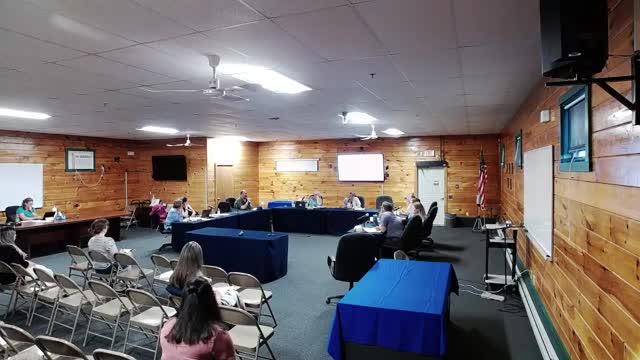Budget Cuts Spark Heated Debate Over School Funding Crisis
June 26, 2024 | RSU 04, School Districts, Maine

This article was created by AI summarizing key points discussed. AI makes mistakes, so for full details and context, please refer to the video of the full meeting. Please report any errors so we can fix them. Report an error »

In a recent government meeting, school board members engaged in a heated discussion regarding budget cuts and the implications for local education. The dialogue highlighted the ongoing struggle to balance fiscal responsibility with the need to maintain quality educational environments for students.
One board member, reflecting on past budget challenges, emphasized the importance of not further reducing funding for essential services, stating, \"If we continue to cut this every year, they're gonna wanna cut it again and cut it again.\" This sentiment was echoed by another member who, drawing from personal experience as a long-time educator, argued for the necessity of investing in school repairs and resources to ensure a safe learning environment for children.
The conversation also touched on the community's response to budget proposals, with one member noting that a significant portion of voters had rejected the current budget, indicating a disconnect between the board's decisions and public sentiment. \"Only 38% supported this budget,\" they pointed out, stressing the need for the board to listen to community concerns.
Members debated potential cuts, with suggestions ranging from reducing administrative positions to reevaluating expenditures on training and technology. One board member expressed frustration over the lack of concrete proposals for cuts, stating, \"I don't hear anything coming back,\" and called for more collaborative discussions to identify feasible solutions.
The meeting underscored the complexity of budgetary decisions in the face of economic pressures affecting families and the school district. As board members grappled with the challenge of providing quality education while managing limited resources, the overarching theme remained clear: the need for a balanced approach that prioritizes both fiscal responsibility and the educational needs of students.
One board member, reflecting on past budget challenges, emphasized the importance of not further reducing funding for essential services, stating, \"If we continue to cut this every year, they're gonna wanna cut it again and cut it again.\" This sentiment was echoed by another member who, drawing from personal experience as a long-time educator, argued for the necessity of investing in school repairs and resources to ensure a safe learning environment for children.
The conversation also touched on the community's response to budget proposals, with one member noting that a significant portion of voters had rejected the current budget, indicating a disconnect between the board's decisions and public sentiment. \"Only 38% supported this budget,\" they pointed out, stressing the need for the board to listen to community concerns.
Members debated potential cuts, with suggestions ranging from reducing administrative positions to reevaluating expenditures on training and technology. One board member expressed frustration over the lack of concrete proposals for cuts, stating, \"I don't hear anything coming back,\" and called for more collaborative discussions to identify feasible solutions.
The meeting underscored the complexity of budgetary decisions in the face of economic pressures affecting families and the school district. As board members grappled with the challenge of providing quality education while managing limited resources, the overarching theme remained clear: the need for a balanced approach that prioritizes both fiscal responsibility and the educational needs of students.
View full meeting
This article is based on a recent meeting—watch the full video and explore the complete transcript for deeper insights into the discussion.
View full meeting
